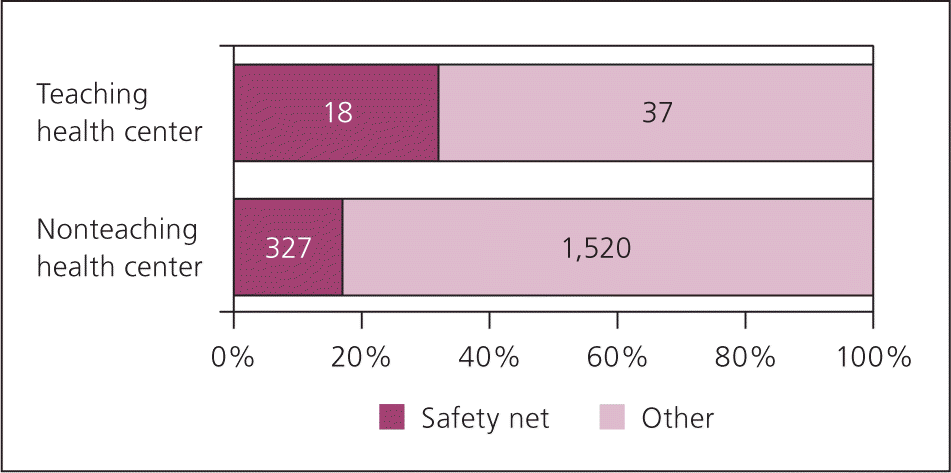
Am Fam Physician. 2015;92(10):868
Author disclosure: No relevant financial affiliations.
The Teaching Health Center Graduate Medical Education (THCGME) program funds new primary care residencies at community health centers caring for the nation's underserved population. In a national census of third-year family medicine residents, those who trained in teaching health centers were more likely to plan to work in safety net clinics than residents who did not train in these centers.
Evidence that training in community-based underserved settings is associated with a higher likelihood of practicing in those settings inspired the creation of the THCGME program, which has funded residency education in community health centers, rural health clinics, and tribal clinics since 2011.1 The 2014 American Board of Family Medicine census of family medicine residents who registered for their board examinations three months prior to graduation included questions on intended future practice. This group included the first class graduating from THCGME programs. We used these data to assess whether graduates of these programs were more likely than other physicians to plan to practice in underserved settings (Figure 1). Among graduates with an anticipated practice location, significantly more residents from teaching health centers than from other family medicine residencies (33% vs. 18%; P = .004) planned to practice in settings primarily associated with underserved populations (e.g., community health centers, rural health clinics, Indian Health Service, U.S. Public Health Service).

A shortage of 35,000 primary care physicians by 2025 has been projected,2 which will be more acute in underserved areas and settings.3 Funding to expand primary care residency training in teaching health centers was provided for only three years, and most THCGME program directors report that these training positions cannot continue without additional funding.4,5 Congressional action in the spring of 2015 to extend funding for the THCGME program by two years was important, but the program's long-term viability and the production of safety-net physicians are jeopardized without broader graduate medical education reform.
The information and opinions contained in research from the Graham Center do not necessarily reflect the views or the policy of the AAFP.
This series is coordinated by Kenny Lin, MD, MPH, Associate Deputy Editor for AFP Online.
A collection of Graham Center Policy One-Pagers published in AFP is available at https://www.aafp.org/afp/graham.
Policy One-Pagers are available from the Graham Center at https://www.graham-center.org.
